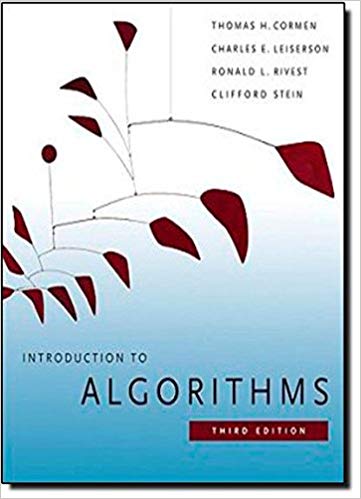In this problem, we use indicator random variables to analyze the RANDOMIZED SELECT procedure in a manner
Question:
As in the quicksort analysis, we assume that all elements are distinct, and we rename the elements of the input array A as z1, z2, . . . ,zn, where zi is the i th smallest element. Thus, the call RANDOMIZED-SELECT ( A, 1, n, k) returns zk. For 1 ‰¤ i < j ‰¤ n, let Xijk = I {zi is compared with zj sometime during the execution of the algorithm to find zk}.
a. Give an exact expression for E [Xijk]. Your expression may have different values, depending on the values of i, j, and k.
b. Let Xk denote the total number of comparisons between elements of array A when finding zk. Show that
![j – k – 1 j - k +1 ΣΣ Σ k k – i – 1 E[X&] < 2(EE: j - i +1 i=1 j=k k – i +1 i=1 j=k+1](https://dsd5zvtm8ll6.cloudfront.net/si.question.images/images/question_images/1544/7/9/2/3415c13a915650691544720329842.jpg)
c. Show that E [Xk] ‰¤ 4n.
d. Conclude that, assuming all elements of array A are distinct, RANDOMIZED SELECT runs in expected time O(n).
Step by Step Answer:

Introduction to Algorithms
ISBN: 978-0262033848
3rd edition
Authors: Thomas H. Cormen, Charles E. Leiserson, Ronald L. Rivest





